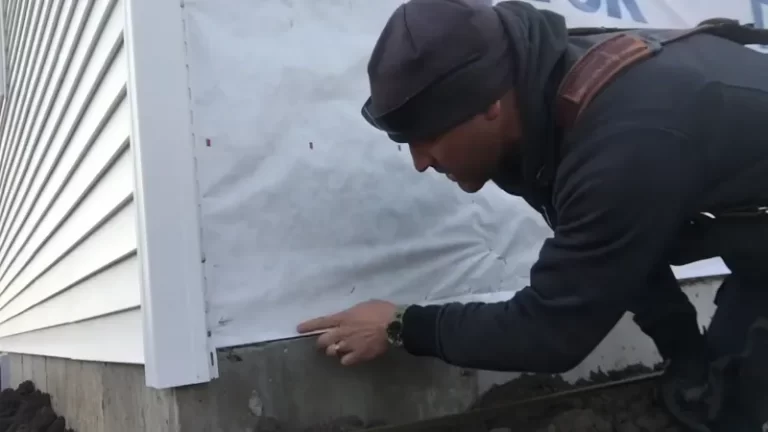Can You Walk on Rigid Foam Insulation? The Surprising Answer
Ever found yourself in a basement or on a roof, surrounded by freshly laid sheets of rigid foam, and wondered if you could step on it? It’s a common dilemma during DIY projects and professional construction alike.
You need to cross the room, but the only path is over that sea of pink, blue, or silver-faced board. Taking a step could either be perfectly fine or a costly mistake.
You'll Learn About
The Core Problem: To Walk or Not to Walk?
The main concern is simple: will your weight damage the insulation? The answer isn’t a straightforward yes or no. It depends heavily on the type of foam, its density, and how you distribute your weight.
Stepping directly onto a foam board can cause dents, crushing the very air pockets that give it its insulating power. This compression can reduce its R-value and create an uneven surface for the flooring or roofing that goes on top.
Understanding Compressive Strength
Rigid foam insulation’s ability to resist being crushed is measured by its compressive strength, rated in pounds per square inch (PSI). This number is the key to understanding what the foam can handle. A higher PSI means the board is more resistant to compression and, therefore, more walkable.
Think of it like walking on snow. Your boot sinks in, but a snowshoe distributes your weight, allowing you to stay on top. The same principle applies here; distributing your weight is crucial to avoid damage.

Types of Rigid Foam and Their Walkability
Not all rigid foam is created equal. The three main types you’ll encounter are Expanded Polystyrene (EPS), Extruded Polystyrene (XPS), and Polyisocyanurate (Polyiso). Each has a different typical compressive strength, which directly impacts whether you can walk on it.
Expanded Polystyrene (EPS)
EPS is the white, bead-like foam often used for packaging and coffee cups, but it’s also a common insulation material. Standard EPS typically has a lower compressive strength, often around 10 to 15 PSI. While this is great for many insulation applications, it’s generally not suitable for direct foot traffic without protection.
It’s the most susceptible to crushing and denting under concentrated weight. If your house has no insulation and you’re starting from scratch in the basement, be extra careful with EPS boards.
Extruded Polystyrene (XPS)
XPS is the familiar pink or blue foam board. It’s manufactured through a different process than EPS, resulting in a denser, more uniform closed-cell structure. This gives it a higher compressive strength, typically ranging from 15 to 25 PSI or more.
A 25 PSI board can technically support a significant amount of weight if it’s distributed. However, the sharp heel of a work boot still concentrates force into a small area, which can easily cause damage. It’s more forgiving than EPS, but caution is still required.
Polyisocyanurate (Polyiso)
Polyiso, or “polyiso,” insulation usually comes with a foil or fiberglass facing. It boasts the highest R-value per inch of the three types. Its compressive strength is typically around 20 to 25 PSI, similar to standard XPS.
The foil facing can provide some minor protection against punctures, but the foam core is still vulnerable to crushing. Like XPS, it’s not designed to be a walking surface during construction without proper precautions.
The Solution: How to Walk on Rigid Foam Safely
So, you have to cross the insulated area. The solution isn’t to walk on eggshells; it’s to distribute your weight effectively. This protects the insulation from damage and ensures a level, effective final installation.
| Foam Type | Common Color | Typical Compressive Strength (PSI) | Direct Walkability |
|---|---|---|---|
| Expanded Polystyrene (EPS) | White | 10 – 15 PSI | Not Recommended |
| Extruded Polystyrene (XPS) | Pink or Blue | 15 – 25 PSI | Use Caution & Protection |
| Polyisocyanurate (Polyiso) | Silver/Foil Faced | 20 – 25 PSI | Use Caution & Protection |
Use Plywood or OSB “Walkways”
The single most effective method is to lay down temporary walkways. A few sheets of plywood or Oriented Strand Board (OSB) placed over the foam create a safe path for you to walk on.
A 3/4-inch thick sheet of plywood spreads your weight over several square feet, reducing the PSI on the foam to a negligible amount. This is the professional standard for working on insulated floors or roofs.
Kneeling Boards and Crawling
For shorter distances or quick tasks, a “kneeling board”—a small, manageable piece of plywood—can be your best friend. Place it down, kneel on it to do your work, and then move it to the next spot.
Crawling can also distribute your weight more effectively than walking, but it’s less practical for carrying tools and materials. Combining crawling with a kneeling board for your hands offers even better protection for the foam.
Long-Term Solutions: Installing a Subfloor
Once the insulation is in place, the permanent solution is to install a subfloor. This is the layer that will permanently protect the foam and provide a stable base for your finished flooring.
For basement floors, this typically involves laying down the rigid foam, followed by one or two layers of plywood or OSB on top. The subfloor is then secured to the concrete slab with long screws, creating a durable, insulated surface you can walk on without a second thought.
Why Protecting the Foam Matters
It might seem like a small dent won’t make a big difference, but the cumulative effect can be significant. Every crushed area is a spot where the R-value is compromised, creating a thermal bridge where heat can escape.
Furthermore, an uneven surface of dented foam can cause problems for the finished flooring. Laminate or vinyl plank flooring requires a flat surface to lock together properly, and a damaged foam underlayment can lead to creaks, gaps, and an unprofessional finish. If you’re undertaking a big project, exploring options like the ones covered in Mass Save insulation reviews can provide insight into professional standards.
Why Insurance Companies Dislike Spray Foam Insulation
Spray foam insulation is popular for its superior energy efficiency and excellent air sealing properties. However, many homeowners find that their insurance companies are hesitant to cover homes with spray foam insulation, especially in certain circumstances. While it offers numerous benefits, there are specific reasons why insurers may view spray foam insulation with caution. Let’s dive into why this insulation method raises concerns among insurance companies and what you can do about it.
1. Fire Safety Concerns
One of the primary reasons insurance companies are wary of spray foam insulation is the fire risk associated with it. When properly applied, spray foam insulation is fire-resistant, but if the foam is exposed or improperly installed, it can be highly flammable. Additionally, some types of spray foam, particularly open-cell foam, may not meet fire safety codes in some regions.
Even though closed-cell spray foam is more fire-resistant, insurance companies may still be concerned because the foam can release harmful chemicals when it burns. These chemicals, combined with the foam’s ability to contribute to rapid fire spread if not adequately covered or installed, make it a potential hazard in the eyes of insurers.
2. Increased Difficulty in Repairing Damage
Once spray foam insulation is installed, it can be difficult to repair or replace. Unlike traditional insulation materials such as fiberglass, which can be easily removed and replaced, spray foam can be harder to access, especially if it’s applied in hard-to-reach areas like behind walls or ceilings.
This means that in the event of damage (from a fire, flooding, or pest infestation), insurance companies might face higher costs to repair or replace the insulation. The complexity of removing and replacing spray foam adds an additional layer of uncertainty for insurers, who prefer standard materials that are easier to work with.
3. Moisture and Mold Issues
While spray foam insulation is excellent at sealing out air, it can sometimes trap moisture if not applied correctly or if there is pre-existing water damage. When moisture gets trapped behind the foam, it creates an ideal environment for mold and mildew to grow. Mold can quickly spread within the walls or other areas where foam has been applied, leading to expensive remediation costs and potential health risks.
Since insurance companies must account for all potential risks and damages, the possibility of mold growth due to trapped moisture makes spray foam insulation a less attractive option for insurers. In areas with high humidity or frequent rainfall, insurers might avoid covering homes with spray foam for this reason.
4. Installation Issues and Warranty Concerns
Improper installation is another concern with spray foam insulation. If the foam is not applied correctly or is too thick, it can result in poor insulation performance and potential long-term issues, such as cracking or shrinking.
Most spray foam manufacturers offer warranties, but if the installation was done poorly, it could void the warranty, leaving homeowners with a significant financial burden if issues arise. Insurance companies typically prefer to insure homes with materials that come with predictable performance and easy-to-verify warranties. The uncertainty surrounding spray foam’s installation quality can make it a riskier option for them.
5. Impact on Home Value and Future Buyers
While spray foam insulation is seen as an investment in energy efficiency, it can sometimes impact a home’s resale value. Some buyers may be hesitant to purchase a home with spray foam insulation, especially if they are concerned about potential issues such as moisture problems or the difficulty of removing or replacing foam in the future.
Insurance companies are also mindful of the long-term implications of a home’s value and marketability. If a home becomes harder to insure or less attractive to potential buyers due to the use of spray foam insulation, insurers might be more cautious about covering the property.
Final Verdict: Don’t Walk Directly on It
While you technically might not fall through a sheet of high-density XPS, you should avoid walking directly on any type of rigid foam insulation. The risk of causing costly and performance-reducing damage is simply too high. Concentrated weight from a heel or even a misplaced tool can create a permanent dent.
Always use a temporary walkway made of plywood or OSB to distribute your weight. This simple precaution ensures your insulation remains effective and provides a smooth, stable base for the next stage of construction. And if you get any spray foam in unwanted places during your project, you might need a guide on how to get foam insulation out of hair, because construction can be a messy business.

